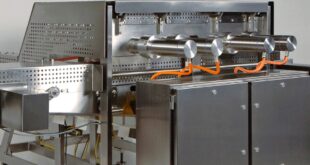Dr Liz Dixon explains why knowledge of polyalkylene glycols (PAGs) composition is more crucial now than ever
Since the R134a refrigerant first became widely used in the early 1990s, polyalkylene glycols (PAGs) have been the lubricants of choice for mobile air conditioning (MAC) compressor manufacturers.
Unfortunately, a growing number of aftermarket suppliers are cutting corners to reduce costs, leading to a number of products labelled as PAGs that are not suitable for compressors.
When the R134a hydrofluorocarbon (HFC) refrigerant was rolled out across MAC systems in 1992, it marked a significant change for the industry.
R134a was the first HFC refrigerant with an ozone depleting potential (ODP) of 0, and the first chlorine-free HFC. It also necessitated the development of new synthetic lubricants that were miscible with HFCs.
PAGs quickly emerged as the preferential choice for MACs, which they remain as to this day. This is due to the potent combination of good HFC miscibility, excellent viscosity across a wide temperature range, superior lubricity and compatibility with the elastomers and metals in MAC units.
PAGs are synthetic lubricants produced through the polymerisation of alkylene oxide monomers – usually ethylene oxide (EO) or propylene oxide (PO) – onto an initiator, which is typically a simple alcohol. They can be either single-end capped (SEC) or double-end capped (DEC).
Typically, the latter offers additional technical advantages for MACs, such as improved miscibility and reduced water absorption. But, overall, SEC PAGs, like Shrieve’s ZEROL PAG, are often used in MACs and offer suitable performance.
Due to these properties, most compressor and automotive original equipment manufacturers (OEMs) supply systems with PAG lubricants as the primary recommendation. However, this recommendation is typically for a high quality PAG – which, research suggests, is not what many aftermarket PAG products are.
As a market leader in the formulation and development of speciality PAG lubricants,
Shrieve conducted a test to identify the composition of several commercially available aftermarket PAG lubricants.
The full methodology of the study is available on our website, but the results found that a growing number of aftermarket products labelled as PAGs do not meet the chemistry or performance requirements of PAG lubricants.
For R134a MAC systems, the lubricant should be entirely PAG-based to function effectively.
OEMs have a specific set of characteristics that are expected from PAGs, such as appropriate refrigerant miscibility and lubricant stability under typical operating conditions. These characteristics help the lubricant to maximise system efficiency and maintain its product integrity across the system’s temperature range.
However, several of the tested aftermarket products labelled as PAGs could not deliver this performance. They were, in effect, mixtures of unrecommended components that are labelled to appear as good quality PAGs.
The result is aftermarket products that are unreliable; they may or may not support satisfactory stability, and they may or may not be miscible with the compressor refrigerant.
Even as industry has moved away from the use of R134a in favour of the R1234yf hydrofluoroolefin (HFO) refrigerant, this aftermarket trend sets a concerning precedent.
R1234yf systems need a specially developed PAG solution to perform effectively and efficiently; and even a pure PAG, if it is low quality, may not necessarily have the required lubrication characteristics.
At Shrieve, we have developed the ZEROL HD premium compressor lubricant to meet this need for a technically advanced PAG for R1234yf systems that can ensure thermal, chemical and hydrolytic stability. There are no such assurances in false aftermarket PAGs.
This is why mechanical engineers need to work directly with recognised industry experts such as Shrieve, which can supply high quality speciality PAG lubricants like ZEROL HD.
Working directly with a reputable supplier can ensure that the supplied product meets the industry need to act on the growing issue of false labelling of lubricants.
Left unabated, the issue will compromise system performance in the short-term, and could cause significant damage to system components in the long-term.
Dr Liz Dixon, is global technology director at speciality lubricants business Shrieve.
 Engineer News Network The ultimate online news and information resource for today’s engineer
Engineer News Network The ultimate online news and information resource for today’s engineer





